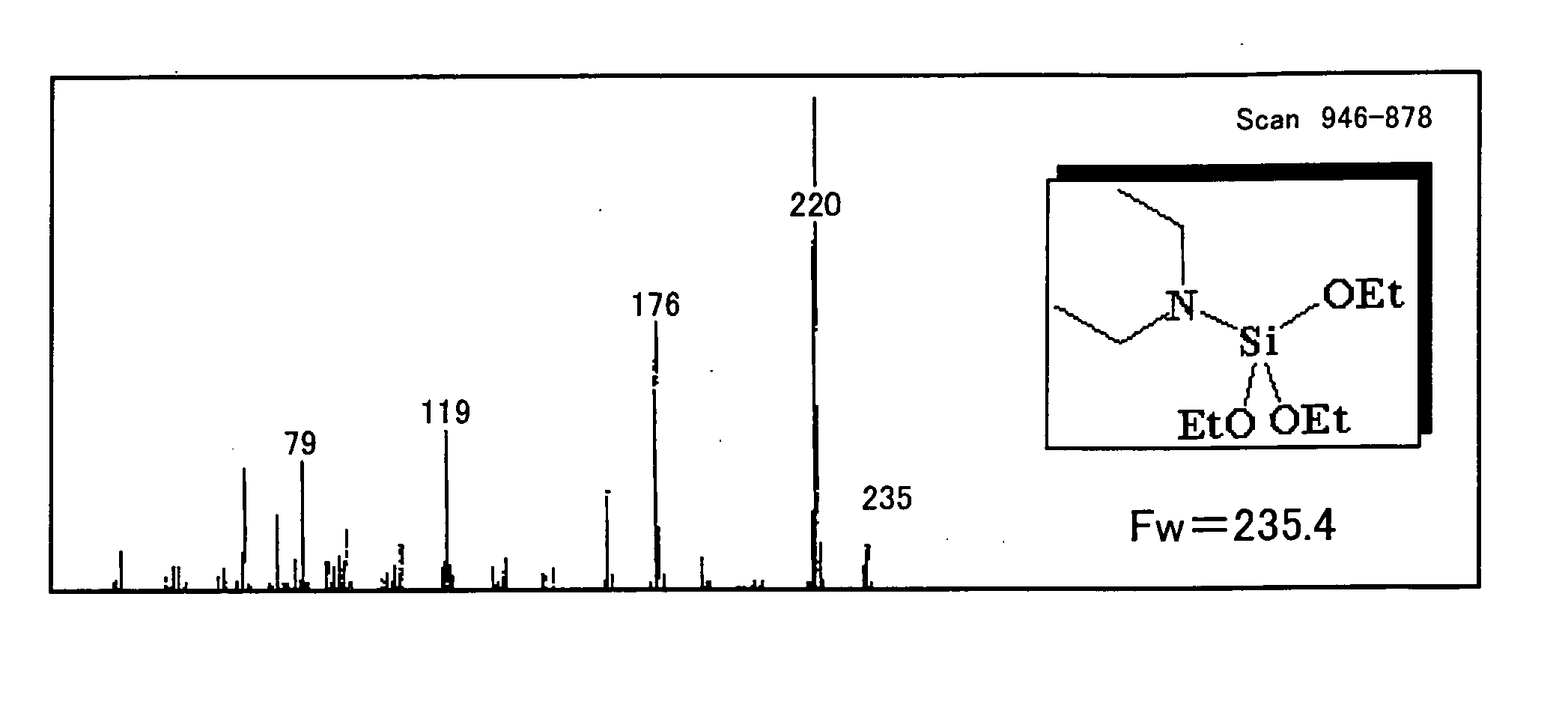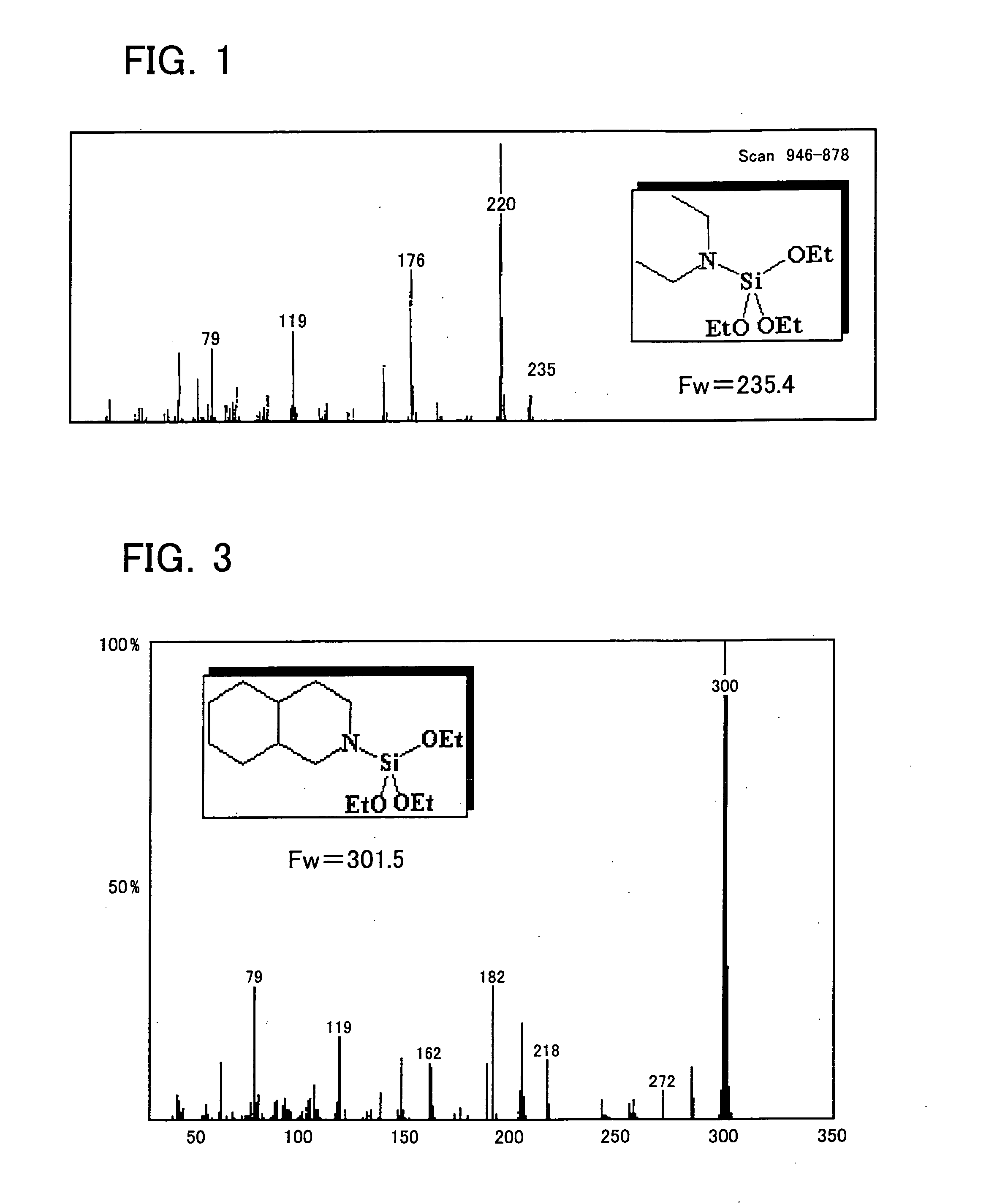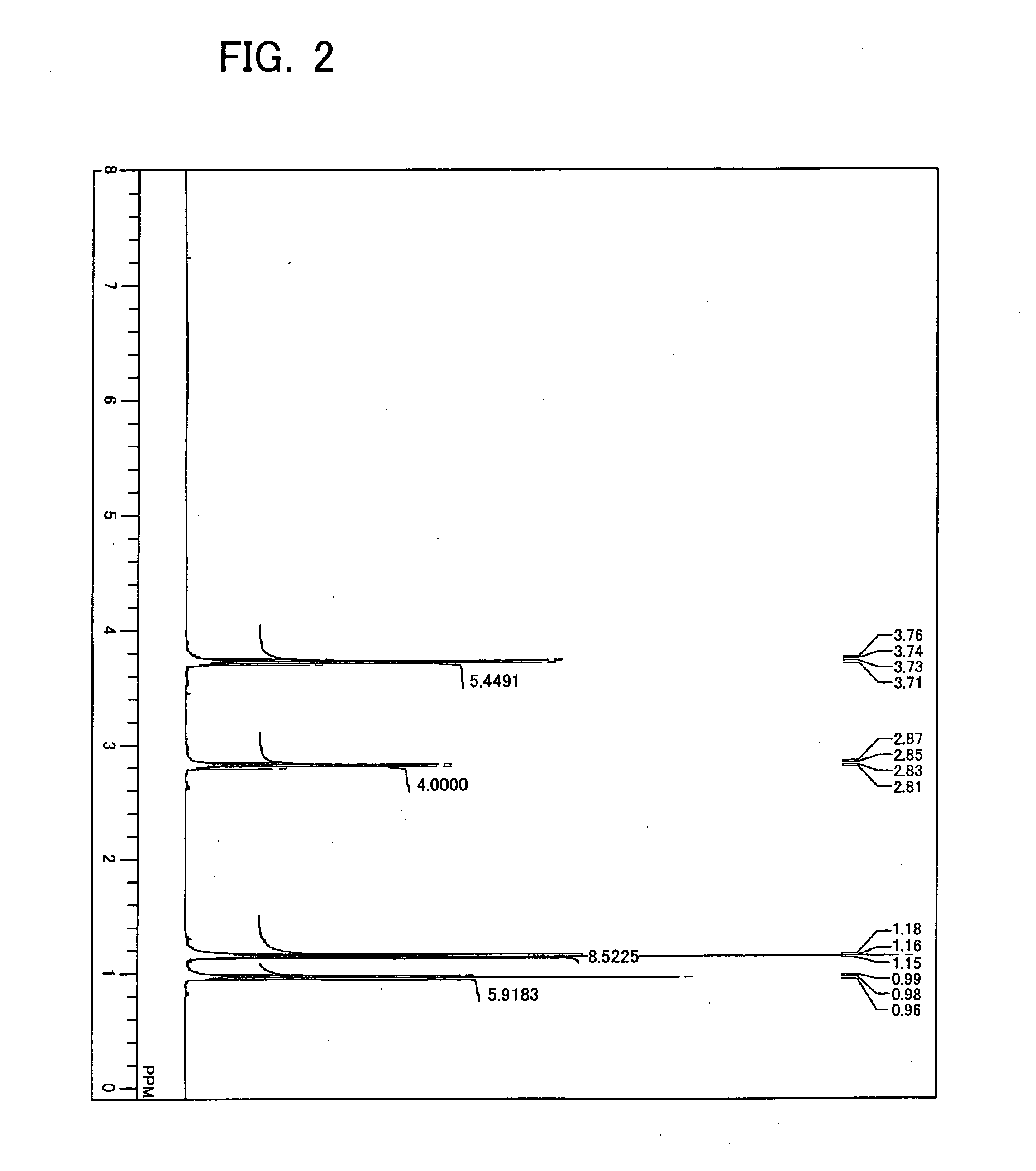Catalysts for polymerization or copolymerization of alpha-olefins, catalyst components thereof, and processes for polymerization of alpha-olefins with the catalysts
a technology of alpha-olefin and catalyst, which is applied in the direction of catalyst activation/preparation, chemical/physical processes, group 4/14 element organic compounds, etc., can solve the problems of poor hydrogen response, poor stereoregularity, and poor hydrogen response of catalyst systems using such silicon compounds, and achieve good hydrogen response, high polymerization reaction rate, and high stereoregularity of the produced -olefin polymer
- Summary
- Abstract
- Description
- Claims
- Application Information
AI Technical Summary
Benefits of technology
Problems solved by technology
Method used
Image
Examples
example 1
[0241] Diethylaminotriethoxysilane was synthesized as Example 1 in the following manner. First, into a four-necked flask (volume of 1 L) equipped with a magnet seal agitator and a dropping funnel, a 100 mL of toluene, a 10 mL of tetrahydro furan, and a 14.6 g (0.2 mol) of diethylamine were introduced and then mixed and agitated. A Grignard reagent (titer=1.71 mol / L) is on the other hand supplied by 129 mL (0.22 mol) into the dropping funnel. Thereafter, while agitating, the Grignard reagent is dropped from the dropping funnel into the flask at room temperature (air-cooling), spending 30 minutes. After completion of dropping, agitating was performed at 60° C. for one hour for Grignard exchange reaction. Then, a 41.7 g (0.2 mol) of tetraethoxysilane previously introduced into the dropping funnel is dropped into the flask, spending 15 minutes. After completion of dropping, a reaction was performed at 60° C. for 2 hours. At this moment, a solid of magnesium ethoxy chloride deposited in ...
example 2
[0242] Diethylaminotri-n-propoxysilane was synthesized as Example 2. This synthesis was performed in the same manner as the synthesizing method of Example 1 except for the use of n-propoxysilane 52.9 g instead of the tetraethoxysilane 41.7 g. The target product is a liquid with a colorless transparent appearance, which has a boiling point of 72.0° C. / 5 mmHg, and a GC purity of 97.0%.
example 3
[0243] Dimethylaminotriethoxysilane was synthesized as Example 3. This synthesis was performed in the same manner as the synthesizing method of Example 1 except for the use of dimethylamine 9.0 g instead of the diethylamine 14.6 g. The target product is a liquid with a colorless transparent appearance, which has a boiling point of 81.0° C. / 48 mmHg, and a GC purity of 95.0%.
PUM
| Property | Measurement | Unit |
|---|---|---|
| weight | aaaaa | aaaaa |
| pressure | aaaaa | aaaaa |
| pressure | aaaaa | aaaaa |
Abstract
Description
Claims
Application Information
 Login to View More
Login to View More - R&D
- Intellectual Property
- Life Sciences
- Materials
- Tech Scout
- Unparalleled Data Quality
- Higher Quality Content
- 60% Fewer Hallucinations
Browse by: Latest US Patents, China's latest patents, Technical Efficacy Thesaurus, Application Domain, Technology Topic, Popular Technical Reports.
© 2025 PatSnap. All rights reserved.Legal|Privacy policy|Modern Slavery Act Transparency Statement|Sitemap|About US| Contact US: help@patsnap.com



